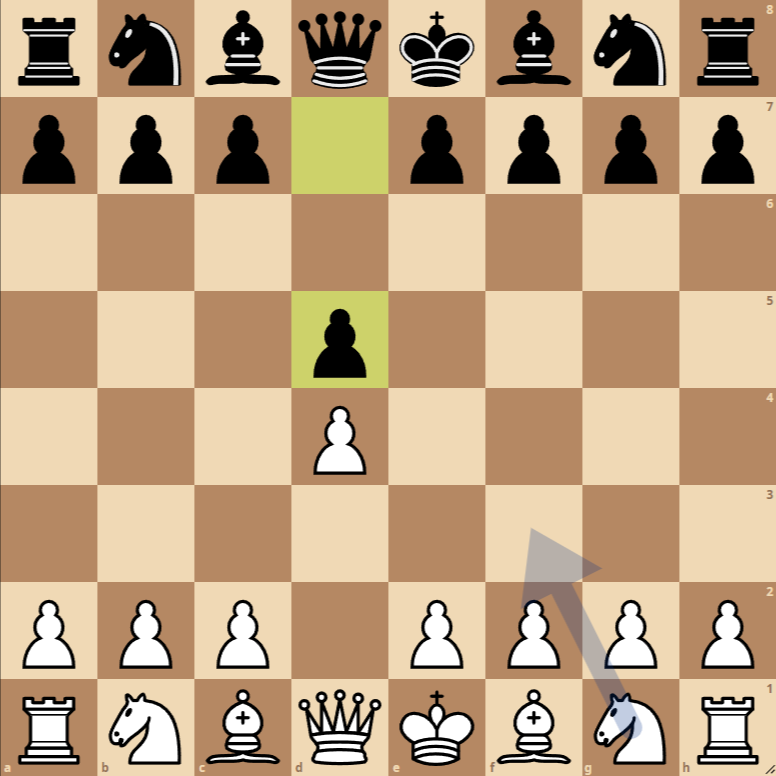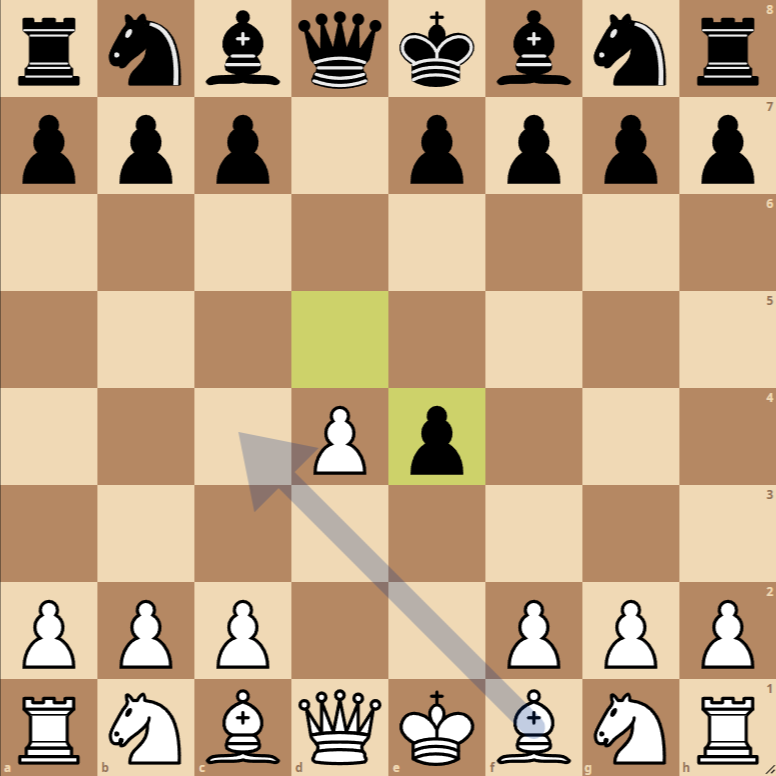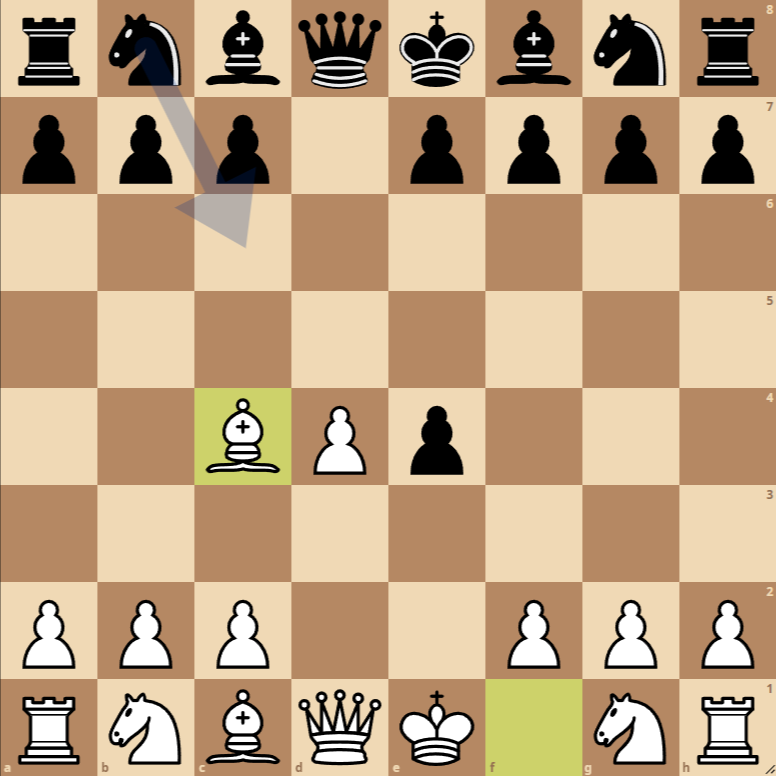How to Play the Blackmar-Diemer Gambit, Fritz Attack Opening


- 1. d4 d5: White opens with the queen’s pawn, advancing two squares, aiming to control the center and prepare the development of their minor pieces. Black responds symmetrically, also advancing their queen’s pawn two squares, with the intention to maintain balance in the center.
- 2. e4: White offers a gambit, temporarily sacrificing a pawn to achieve faster piece development and open lines for their major pieces. It’s an aggressive move that seeks to disrupt Black’s position from the start.
- dxe4: Black accepts the gambit, capturing the offered pawn. This gives them a temporary material advantage but requires time to reorganize their pieces and consolidate their position.
- 3. Bc4: White develops their bishop to an active square, exerting pressure on the enemy king’s side, specifically targeting the weakness created on f7. This move also prepares for a quick castling and continues effective white piece development.
Variations of the Blackmar-Diemer Gambit, Fritz Attack
Acceptance Variation
In this variation, Black accepts the offered pawn with dxe4. White seeks to recover the pawn with f3 or continue their development with Nc3, preparing for a swift attack.
Declination Variation
Black may decide not to accept the gambit and instead play e6 or c6, aiming to strengthen their center without altering the pawn structure. White can then try to apply pressure with moves like c4 or continue developing their pieces.
The Blackmar-Diemer Gambit Opening
The Blackmar-Diemer Gambit, specifically the Fritz Attack variation, begins with the moves 1. d4 d5 2. e4 dxe4 3. Bc4. This aggressive approach by White involves sacrificing a pawn early on to gain rapid initiative and development. The resulting position offers tactical opportunities and challenges for both White and Black, with several strategic options to consider.
Strategy and Tactics for White
Pawn Recovery and Strong Center: White will aim to recapture the pawn on e4 with moves like f3 or even by developing the knight to Nc3, pressuring e4. Establishing a strong center with pawns on d4 and e4 (after recovery) is crucial for controlling the game and facilitating the development of minor pieces to active squares.
Rapid Development and Center Control: The move Bc4 looks at the weak point f7 in Black’s camp, threatening an early attack. Swift mobilization of pieces to offensive positions allows White to exert pressure on Black’s kingside before it can complete castling.
Aggressive Play: White must maintain pressure, seeking opportunities to attack and challenge Black’s defense. Moves like Ne2 followed by 0-0 and f3 (or directly f3 if circumstances allow) are typical to sustain the initiative.
Strategy and Tactics for Black
Defense and Counterplay: Faced with White’s aggression, Black should focus on solid defense while not neglecting the opportunity for counterplay. Harmonious piece development with moves like Nf6, e6, or c6 is crucial to counteract White’s center and initiative.
Nf6: Developing the knight to f6 not only helps to recapture the pawn on e4 but also prepares for a possible short castling, strengthening the safety of the Black king.
e6: This move aims to bolster the center and prepare the development of the bishop on c8, possibly via b7, creating counter-pressure in the center and kingside.
c6: Developing the other knight to c6 reinforces control over the center, especially d4 square, and provides support for future moves aiming to challenge White’s central pawn structure.
Next Moves
After facing the initial pressure, Black should seek a balanced strategy between maintaining the king’s safety and developing an active counterplay. The choice between Nf6, e6, or c6 should be based on the player’s preferred style: defensive, structural, or counterattack, respectively. Meanwhile, White continues their development and looks for tactical opportunities, keeping an eye on center control and potential attacks on the Black king.
The Blackmar-Diemer Gambit, especially the Fritz Attack, promises a game full of tactical and strategic complexities, ideal for players who enjoy dynamic play and are willing to take certain risks to achieve an active position from the beginning.

